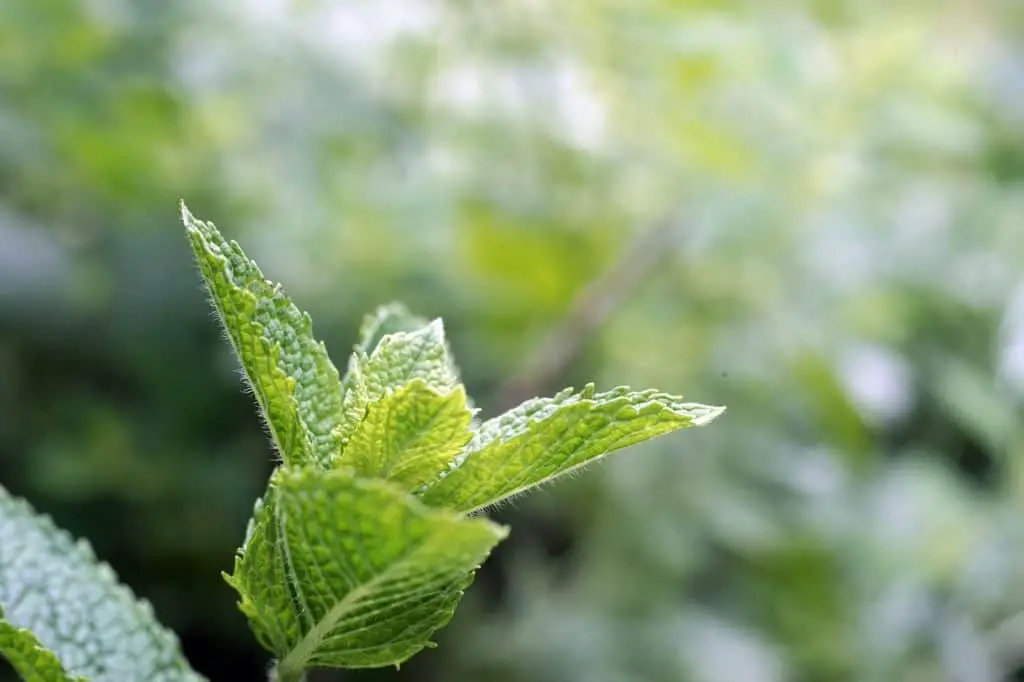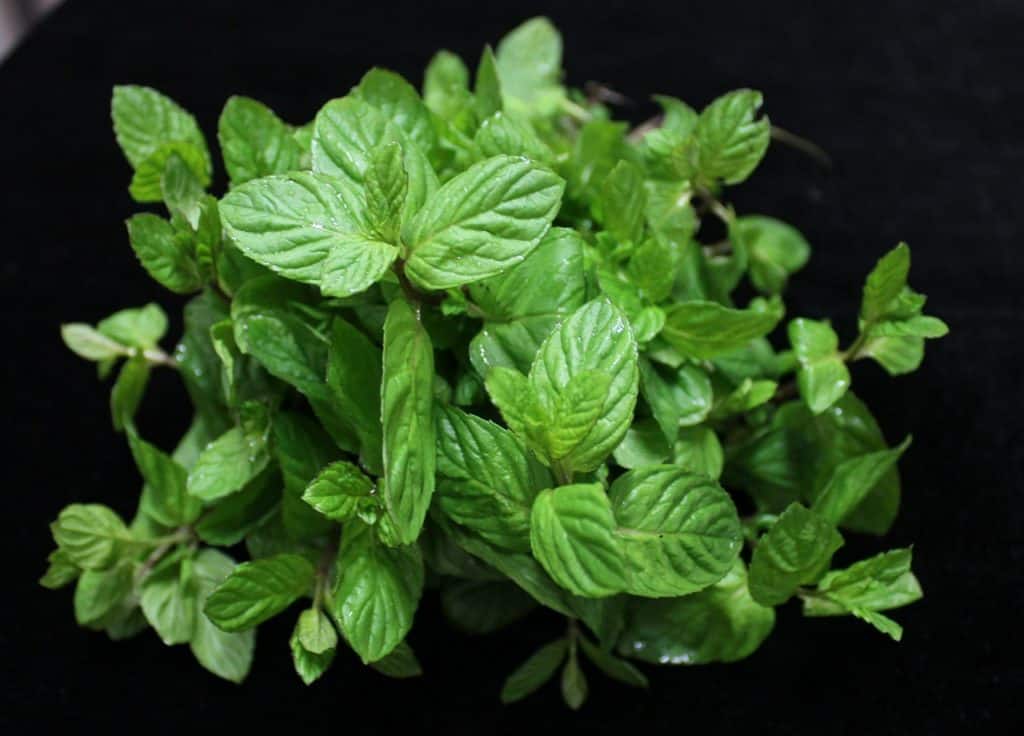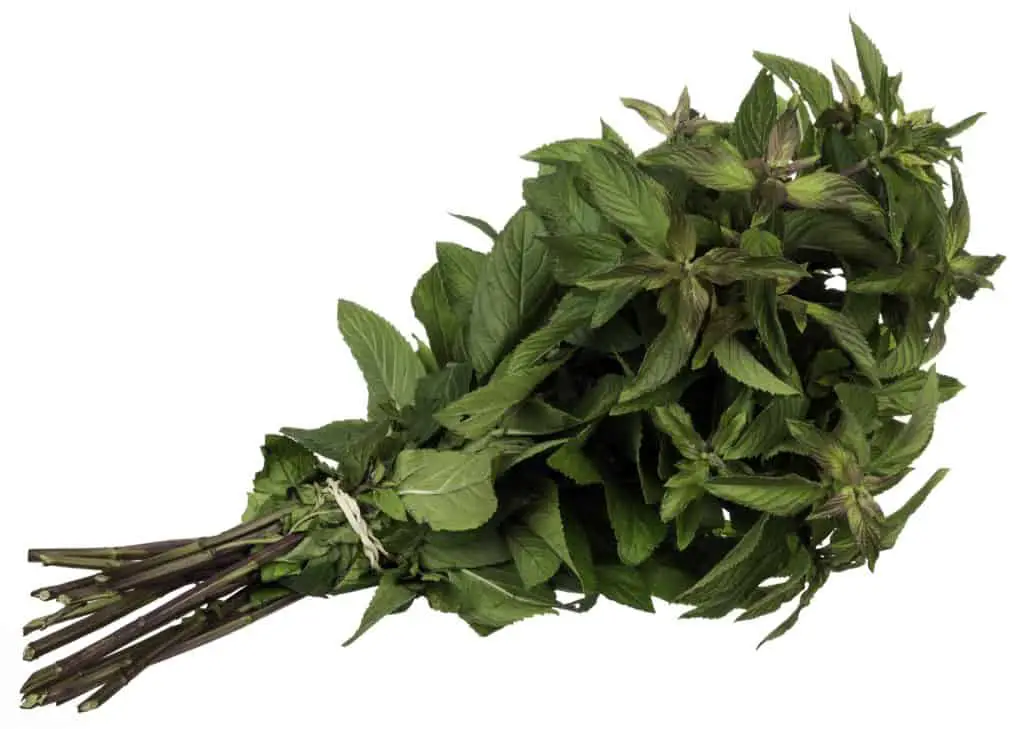Growing mint is quite easy and very rewarding mainly because mint spreads rapidly, mint has high yields, and doesn´t need a lot of care in order to thrive.
In this article, I will tell you everything, that you need to know in order to easily grow your own mint at home within less than two months!
The Different Mint Varieties

Mint is an aromatic herb that grows rapidly and is found in the Mentha genus.
Mint varieties are uncountable, but in this article, we will cover varieties that are commonly grown in different parts of the world.
Most mint varieties require similar growth conditions; thus, you should not be wary when planting a specific mint variety. They thrive in full to partial sunlight and well-drained soils.
As we have seen earlier mint is an invasive plant that grows very fast; thus, you should keep the plant under control.
When you grow mint in containers, it’s easier to control the growth compared to when it’s grown in the ground.
If you choose to plant different varies, you should use different containers. If you plant different varieties close to each other, they will cross-pollinate. This may alter the flavor, scent, and characteristics in the plant. Besides, the plant will lose its integrity.
Choosing A Mint Variety. What You Should Look Out For!
Although some mint varieties will have similar flavor and scent, most varieties have unique characteristics.
When selecting a mint variety, you must establish its ideal to grow in your locality. Mint varieties are used for different purposes; some are used for culinary, aromatic, aesthetic or medicinal purposes.
Thus you should choose a variety that will suit your needs.
There are thousands of mint varieties most of which are from the same genus. Common mint varieties used in food preparation and cooking include:
Bowles’ mint (M. x villosa f. alopecuroides)
It has a furry texture and is suitable for all meals prepared using mint. You need to chop the leaves to eliminate the fury texture.
Apple mint (M.suaveolnes)
It has a smell similar to ripe apple and its perfect when shredded.
Black peppermint (M.x piperita piperita)
It has a pungent aroma, and it’s used as peppermint.
Basil mint (M. x piperita citrate’Basil’)
This variety has a spicy scent similar to basil and is fit when mixed with tomatoes, zucchini, and eggplant.
Japanese peppermint (M. arvensis var piperescens)
In Japan, it’s referred to as English mint. It’s used to flavor tea.
Chinese mint (M. arvensis ssp. Haplocalyx)
This variety is used to spice tea.
Chocolate mint (M. x piperita citrate ‘Chocolate’)
This mint variety has a scent characteristic of after-dinner chocolate mint and its ideal as a garnish in sorbets and ice cream and also in desserts.
Corsican mint (M. requienii)
It has a strong peppermint scent after crushing.
Curly mint (M. spicata var crispa)
This variety is used in culinary dishes, and it has a similar flavor to spearmint.
Field mint (M. arvensis)
The herb has high menthol content, and it’s mildly flavored but aromatic. It’s commonly used in Southeast-Asian cooking. It also comes by the name ‘wild mint’ and it was widely used by Native Americans to bake fish.
Ginger mint (M. x graceless)
It’s also referred to as Scotch mint, and it’s used in tomato dishes and salads. It’s a warm, delicate mint variety.
Golden apple mint (M. x gracilis)
It has a spicy apple scent and is used to flavor different meals.
Mountain mint (Pycanthemum pilosa)
Although this isn’t a true mint, its smell and taste are similar to mint, and it’s your buds and leaves are used as a substitute for mint.
Large-leafed horse mint (M. longifolia)
It’s also referred to as Buddleia mint and is used in Afghan and Indian chutneys. It’s musty with a minty flavor.
Lemon mint (M. x acuatica ‘Citrata’)
It’s a refreshing mint variety with a lemon flavor. It’s mainly used in fruit dishes and mint sauce.
Moroccan mint (M. spicata ‘Moroccan’)
It’s as spicy aromatic mint variety that is slightly sweeter than spearmint and is used in minted dishes and flavoring teas.
Peppermint (M. x piperita)
It has sharp-minty flavor, and it’s used to flavor desserts, candies and as a garnish for fruits or punch. It’s also used in cordials, liqueurs, and hot or cold teas.
Orange mint (M. x peperita citrate)
This variety has an orange flavor and its use in fruit dishes and to flavor teas
Pennyroyal (M. pulegium)
This variety has a powerful peppermint flavor and scent. It is used as substitute for peppermint in mint sorbets and also in mint sauce. If pregnant or suffering from kidney disease, you should not use this variety.
Spearmint (M. spicata)
This is the most cultivated of all mint varieties, and it’s used for mint jelly, mint julep, and mint sauce.
Pineapple mint (M. spicata ‘Variegata’)
Its leaves have a tropical fruit aroma while the older leaves have a stronger minty flavor. The young leaves are perfect for fruit desserts, cool drinks, or salads.
Tashkent mint (M. spicata ‘Tahskent’)
It has a strong aroma and flavor, and it’s used in a similar manner to spearmint.
Water mint (M. aquatic)
Its scent varies from strong peppermint to musty.
Who Do I Propage A Mint Plant?

Cuttings and divisions are the easiest and the widely used way of propagating mint, although you can propagate some varieties from seed.
The best time for cuttings is during spring while divisions are best picked in fall.
How To Grow Mint From Cuttings?
Snip off slightly above the axil and place it in a 50/50 mixture of vermiculite and perlite.
These two ingredients are perfect for raising cuttings since they are sterile and retain moisture for longer.
The ideal cuttings should consist of new growth and should be a few inches long. Old-growth has challenges in establishing roots.
In a week or two, the new root will start emerging from the tip of the sprig. You can also apply rooting hormone at the tip of the freshly cut sprig to promote the faster establishment of roots.
How To Grow Mint From Divisions?
It’s easy to get divisions to form your mint plants. consider using a shovel to separate the plant and its root mass into two and transplant each in a separate container.
The plant will experience a transplant shock for a week or more but it will be fine, once the shock is over. So don´t worry about it too much!
How To Grow Mint From Seeds?
When mint is propagated from seeds, it will take slightly longer to become an established plant.
It, therefore, requires extra care when compared to cuttings and divisions.
Prepare a nursery in fertile soil and scatter your seeds. The soil should remain moist but not overwatered.
In a few weeks, the seeds will germinate. Remember only a few varieties of mint can be raised from seeds.
What Container Should You Choose For Your Mint?

When selecting a container for your mint plant, you must ensure the pot has adequate space to accommodate the growth of the plant.
An ideal pot should be around 8 inches in diameter and 10-12 inches deep.
The containers should be deep enough; otherwise, the roots will emerge from the drainage holes in the pot.
What Is The Best Soil For Growing Mint?
You can use potting soil for your plant, buy a readymade potting mix, or prepare your soilless potting mix.
To make the soilless potting mix, you will mix 4-6 parts of peat moss, 1 part vermiculite, and 1 part perlite. Additionally, you need to add ½ a cup of canola meal/cottonseed meal and ½ cup of oyster shell lime or bone meal per every 8 gallons of the potting media; this will supplement the nutrients required for your mint plants.
Alternatively, you can mix 1 part of peat moss, 1 part of perlite, 1part of compost, and 1 part of sterile garden soil to make your potting soil.
What Is The Ideal Soil pH?
Although mint plants grow in a wider range of pH, you should test your soil pH and ensure it’s within 6.0- 7.5.
You can purchase a PH test kit form your local agricultural supply store.
If the soil PH is high, you can lower it by adding aged manure, acidic mulch or compost. If you want to raise the soil pH, use wood ash or pelleted lime.
How To Plant Mint In Containers?
Mint spreads rapidly, so you need to plant only one plant in a 10-inch container.
When transplanting seedlings ensure they are at the same depth as they were in the nursery.
Fill the pot with potting soil. You may make you potting soils or purchase from a local nursery, big-box store, or home improvement store.
Make a small opening in your soil and transplant the mint plants. Cover the roots with the soil around the plant and press gently to make sure the seedling is firmly held in the soil.
Ensure you water the plants immediately after transplanting.
Mint plants thrive in well-drained soils!
Lighting Options For Your Mint Plants
Mint thrives in full to partial sunlight; thus placing your plants in a window that receives sunlight for the most part of the day will work fine.
Fluorescent lighting
If you don’t have a spot that receives adequate sunlight in your home you can use fluorescent lights.
These grow lights will supplement, and you can use the lights entirely if you don’t have a sunny window.
If you use compact fluorescent lights (CFL), ensure they are very close to the plants.
CFLs are ideal for your plants and seedlings, but mature and flowering plants require the discharge (HID) bulbs.
High-Intensity Discharge Grow Lamps (HID)
The HID grow lights use high-pressure sodium (HPS) for flowering plants and metal halide (MH) for vegetative growth.
These grow bulbs need electrical ballast suitable for their wattage. You must understand that CFLs can work under the average household light bulbs, but the HID grow lights require more energy.
Pruning Your Mint Plants
Old-growth
When you prune your mint plants, you encourage growth and density of the leaves.
Pruning will also result in a bushy look as opposed to long spindly stems.
Ensure you remove all the old-growth when pruning your mint. Old stems and leaves lack a strong flavor, and they aren’t ideal for teas and other recipes.
You should not prune more than 1/ 3 rd. of your mint plants since this may cause the plant to enter in shock and temporality halt growth.
The Pinching-off Pruning Method
Pinching is the simplest way to prune your mint plants.
Pinch the ends of the plant using your fingernails. You can also use a scissor for a cleaner cut.
You should use scissors when pruning old and mature stems since they are more fibrous.
When pruning, you need to remove any flower buds in the plants before they open.
Although flowers on the mint plants appear quite attractive, you should always pinch them off using sharp scissors to prevent the flower from producing seeds.
If the plant goes to seeding, the flavor of the mint leaves will be compromised.
Pests and diseases
Mint plants are affected by very few pests and diseases.
But you should watch for aphids and other soft-bodied pests such as stem canker that may attack the leaves.
You should avoid overhead watering and poor air circulation in your mint plants to limit the development of fungal diseases and mildew.
If you note any problems in your mint prune and destroy the affected parts. You should also use a drip tray for your mint to prevent roots from spreading to the ground.
Common diseases that may affect your mint plants include:
· Rust
· Powdery mildew
· Leaf spot
· Anthracnose
How Do You Water Your Mint Plant?
Mint grows perfectly in moist soil but not overwatered soil.
In winter you need to reduce the amount of water for the plants, but you should increase this amount during summer to compensate for water loss due to the high temperature in this season.
At all time you should avoid overwatering and under watering your mint plants.
Fertilizing Your Mint Plants
Herbs grown indoors don’t require much fertilizing to preserve their flavor.
Occasionally feed your mint plants with a water-soluble all-purpose fertilizer.
Alternatively, you can mulch the container with a layer of compost or aged manure.
The ideal time to fertilize your mint is during spring when the plant begins a new vegetative growing season.
What Is The Best Temperature For Mint Plants To Grow?
Mint plants grow best in moderate temperatures; thus, you should the plants from extreme cold.
If you live in the tropics, ensure your plants are kept free from dry, hot air; additionally, make sure your plant gets adequate water.
The indoor temperature for you mint plants should be between 65-70 F (18-21 C) in the day & 55-60 F (13-15 C) at night.
Harvesting Mint!

After transplanting your mint, you need to allow at least 2-6 weeks enabling the plants to gain sufficient foliage.
After the plant has established enough leaves, you can know to start harvesting the leaves according to your needs.
With mint, the most crucial part is the leaves, thus pinch of the leaves when harvesting. You should never harvest over a 1/3 of the plant at any time to avoid affecting regrowth of the plant.
If you have harvested excess leaves dry hem by handing them upside down in the shade to dry.
After you’ve dried the leaves, store them in air-tight containers.
